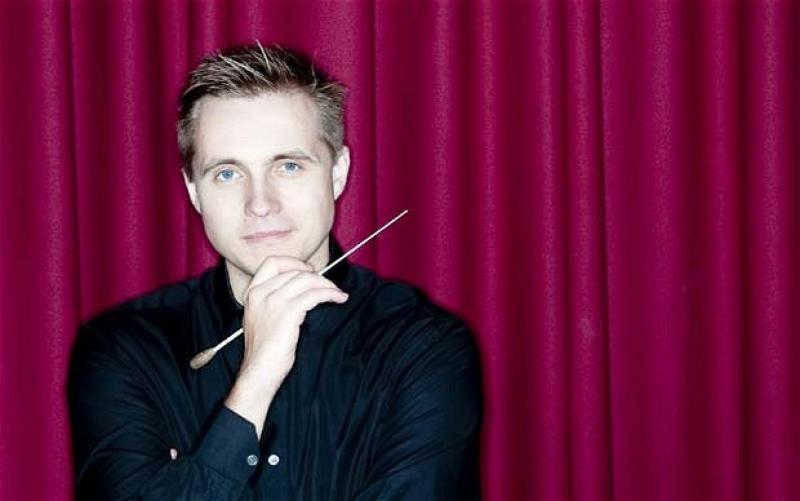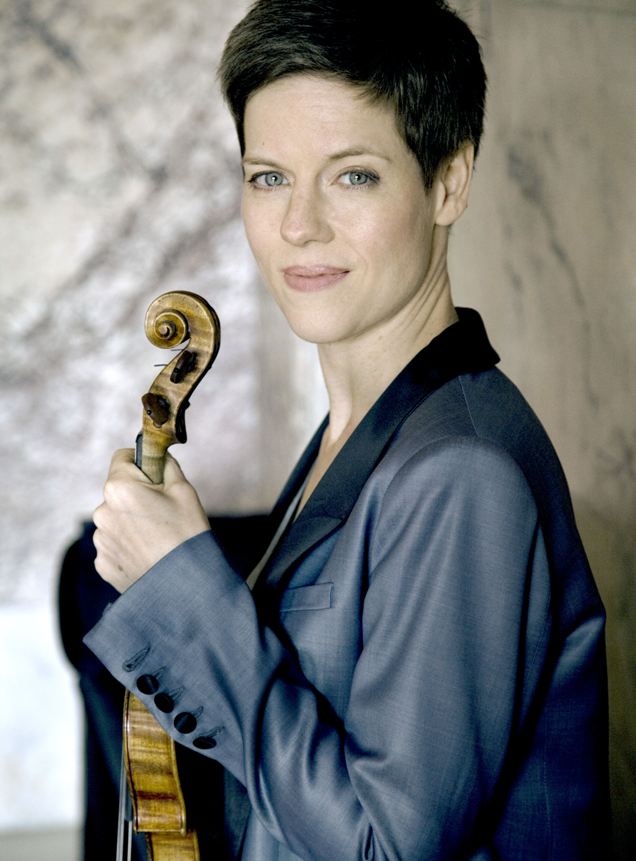Faust, RLPO, Petrenko, Philharmonic Hall, Liverpool | reviews, news & interviews
Faust, RLPO, Petrenko, Philharmonic Hall, Liverpool
Faust, RLPO, Petrenko, Philharmonic Hall, Liverpool
Shattering Mahler Sixth leaves audience stunned

Four years ago, Vasily Petrenko and the Royal Liverpool Philharmonic embarked on a two-year project to play all the Mahler symphonic works over a couple of seasons. It was an ambitious project but it was one which, then, had hall staff dusting down the House Full signs and the queues for returns forming well before the first note was due to played.
There was an air of that at the most recent performance – a shattering interpretation of the Sixth Symphony – where a full house was clearly moved: the long silence at the pitiful ending after so much chaotic emotional wrangling said it all. The opening march was devilishly insistent, full of energy, ever questioning with that Mahlerian hint of self-doubt, that all is not quite right with the world. From that Petrenko relaxed the pace to allow introspective impressions of rural delight to show through, with those distant cowbells doing their Alpine best to reinforce the image. But the let-up was short lived and what Freud reportedly said was Mahler’s "compulsive neurosis" came back with a no-holds barred, hellish impression of chaos, with Petrenko building the RLPO into an intense frenzy.
A brief moment of respite was allowed before Petrenko plunged the audience into the Scherzo, here placed second. The musical direction might be "wuchtig" – "heavy" – but this was less heavy, more grotesque. There were moments, like the first movement, of child-like innocence standing alongside more devilish nastiness. Petrenko pushed the RLPO almost to its limit. And then the Andante – a bit of relaxation after 40 minutes or so of frenzy. But the emotional pressure did not give out. There was much soul-searching in here, with every last bit of emotion wrung out.
 The long finale began mysteriously but built and built until those much anticipated hammer blows. Here was something of a first. Principal percussionist Graham Johns constructed his own "Hammerschlag" to a design produced by Roger Cline (a double bass player at the Chicago Symphony Orchestra and a mean amateur carpenter in his spare time. This was apparently the first time the ‘Hammerschlag’ has been heard in Europe). Again, this was an orchestra tour de force which simply collapsed at the end.
The long finale began mysteriously but built and built until those much anticipated hammer blows. Here was something of a first. Principal percussionist Graham Johns constructed his own "Hammerschlag" to a design produced by Roger Cline (a double bass player at the Chicago Symphony Orchestra and a mean amateur carpenter in his spare time. This was apparently the first time the ‘Hammerschlag’ has been heard in Europe). Again, this was an orchestra tour de force which simply collapsed at the end.
The main impact of this performance was the clarity of line brought out by Petrenko. It allowed listeners really to hear the complexity of the score and, for anyone knowing Das Lied von der Erde and the later symphonies, it signalled the direction in which Mahler’s compositional talents were headed. As for the orchestra, some splendid playing came from the serried ranks of brass on the platform. A great woodwind ensemble and robust strings made for a performance which will be remembered in years to come.
The first work in the concert was Schumann’s D minor Violin Concerto. While the orchestration is somewhat opaque the playing of soloist Isabelle Faust (pictured above) was quite the opposite: warm, witty, thoughtful. The development section of the opening movement was particularly introspective, a great preparation for the intense slow movement Faust produced. The finale, which has the direction of "lively but not fast" was relaxed, cheerful even. It was a great antidote-in-advance for what was to come.
Add comment
The future of Arts Journalism
You can stop theartsdesk.com closing!
We urgently need financing to survive. Our fundraising drive has thus far raised £49,000 but we need to reach £100,000 or we will be forced to close. Please contribute here: https://gofund.me/c3f6033d
And if you can forward this information to anyone who might assist, we’d be grateful.

Subscribe to theartsdesk.com
Thank you for continuing to read our work on theartsdesk.com. For unlimited access to every article in its entirety, including our archive of more than 15,000 pieces, we're asking for £5 per month or £40 per year. We feel it's a very good deal, and hope you do too.
To take a subscription now simply click here.
And if you're looking for that extra gift for a friend or family member, why not treat them to a theartsdesk.com gift subscription?
more Classical music
 Bizet in 150th anniversary year: rich and rare French offerings from Palazzetto Bru Zane
Specialists in French romantic music unveil a treasure trove both live and on disc
Bizet in 150th anniversary year: rich and rare French offerings from Palazzetto Bru Zane
Specialists in French romantic music unveil a treasure trove both live and on disc
 Scottish Chamber Orchestra, Ibragimova, Queen’s Hall, Edinburgh review - rarities, novelties and drumrolls
A pity the SCO didn't pick a better showcase for a shining guest artist
Scottish Chamber Orchestra, Ibragimova, Queen’s Hall, Edinburgh review - rarities, novelties and drumrolls
A pity the SCO didn't pick a better showcase for a shining guest artist
 Kilsby, Parkes, Sinfonia of London, Wilson, Barbican review - string things zing and sing in expert hands
British masterpieces for strings plus other-worldly tenor and horn - and a muscular rarity
Kilsby, Parkes, Sinfonia of London, Wilson, Barbican review - string things zing and sing in expert hands
British masterpieces for strings plus other-worldly tenor and horn - and a muscular rarity
 From Historical to Hip-Hop, Classically Black Music Festival, Kings Place review - a cluster of impressive stars for the future
From quasi-Mozartian elegance to the gritty humour of a kitchen inspection
From Historical to Hip-Hop, Classically Black Music Festival, Kings Place review - a cluster of impressive stars for the future
From quasi-Mozartian elegance to the gritty humour of a kitchen inspection
 Shibe, LSO, Adès, Barbican review - gaudy and glorious new music alongside serene Sibelius
Adès’s passion makes persuasive case for the music he loves, both new and old
Shibe, LSO, Adès, Barbican review - gaudy and glorious new music alongside serene Sibelius
Adès’s passion makes persuasive case for the music he loves, both new and old
 Anja Mittermüller, Richard Fu, Wigmore Hall review - a glorious hall debut
The Austrian mezzo shines - at the age of 22
Anja Mittermüller, Richard Fu, Wigmore Hall review - a glorious hall debut
The Austrian mezzo shines - at the age of 22
 First Person: clarinettist Oliver Pashley on the new horizons of The Hermes Experiment's latest album
Compositions by members of this unusual quartet feature for the first time
First Person: clarinettist Oliver Pashley on the new horizons of The Hermes Experiment's latest album
Compositions by members of this unusual quartet feature for the first time
 Gesualdo Passione, Les Arts Florissants, Amala Dior Company, Barbican review - inspired collaboration excavates the music's humanity
At times it was like watching an anarchic religious procession
Gesualdo Passione, Les Arts Florissants, Amala Dior Company, Barbican review - inspired collaboration excavates the music's humanity
At times it was like watching an anarchic religious procession
 Classical CDs: Camels, concrete and cabaret
An influential American composer's 90th birthday box, plus British piano concertos and a father-and-son duo
Classical CDs: Camels, concrete and cabaret
An influential American composer's 90th birthday box, plus British piano concertos and a father-and-son duo
 Cockerham, Manchester Camerata, Sheen, Martin Harris Centre, Manchester review - re-enacting the dawn of modernism
Two UK premieres added to three miniatures from a seminal event of January 1914
Cockerham, Manchester Camerata, Sheen, Martin Harris Centre, Manchester review - re-enacting the dawn of modernism
Two UK premieres added to three miniatures from a seminal event of January 1914
 Kempf, Brno Philharmonic, Davies, Bridgewater Hall, Manchester review - European tradition meets American jazz
Bouncing Czechs enjoy their Gershwin and Brubeck alongside Janáček and Dvořák
Kempf, Brno Philharmonic, Davies, Bridgewater Hall, Manchester review - European tradition meets American jazz
Bouncing Czechs enjoy their Gershwin and Brubeck alongside Janáček and Dvořák
 Solomon, OAE, Butt, QEH review - daft Biblical whitewashing with great choruses
Even a top soprano and mezzo can’t make this Handel paean wholly convincing
Solomon, OAE, Butt, QEH review - daft Biblical whitewashing with great choruses
Even a top soprano and mezzo can’t make this Handel paean wholly convincing

Comments
actually the Hammerschlag was